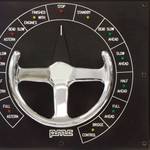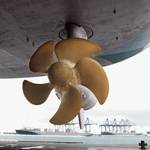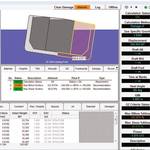
According to Bureau of Labor Statistics, a total of 717 work injuries occurred as a result of contact with objects and equipment in 2013. Roughly, 245 of them were struck by falling objects and another 105 workers were fatally injured after being caught in running equipment or machinery. Needless to say, anything can happen on a jobsite. Your equipment could malfunction or the weather might cause a whirlwind of unexpected issues, or even worse, someone could get hurt. Unfortunately, not much can be done when circumstances such as those arise, which is why developing preventive strategies is crucial to having a successful and safe project. One of those strategies is always choosing safe and reliable lifting equipment. But the question that remains is: is it safer to rent or to buy?
After you’ve examined your infrastructure and determined your lifting challenges, now it’s time to determine your equipment needs. Often times, you’ll find yourself wondering: Should I buy my equipment or is it more sensible to rent?
In reality, it depends on your circumstances. In industries such as shipbuilding and ship repair, the answer is never easy to decipher. Start by considering as to whether you can handle repairs or certifications in-house?
We’re starting on the topic of repairs first because it’s often one of the biggest concerns of not just shipbuilders, but of all construction industries. One poorly maintained hoist could break and cause that propeller you’re lifting to fall. So, not only is it best to anticipate things of this nature to occur, you also need to consider if you can handle repairing the equipment on your own or if you’ll have to outsource the repairs to another company.
Our research shows that hard costs such as rental fees and lease payments are only a small part of total costs. Among the most frequently overlooked costs are those of maintenance and certifications. As you know, all equipment, eventually, requires maintenance, wears out or breaks down. It’s just a matter of when or where. While repairing some equipment can be easy, heavy lifting equipment is a much more complicated matter. In fact, the repairing and certifying heavy lifting equipment is regulated by a specific set of guidelines. For instance, the equipment usually needs to be:
So, if you’re looking to make a purchase, make sure you have access to the specialized labor and testing equipment you’ll need in the event of repairing your equipment.
When making the decision to buy or rent equipment, the next thing you should consider is what’s at stake if the equipment breaks. Shipbuilding is a tough market and it’s just as competitive as every other construction-related industry. By missing a deadline or a budget target, it could mean the end of your relationship with your customer. So, when considering to buy or rent, ask yourself what I am really losing if my equipment fails?
For some projects, it might not be a big deal. When the project at hand is a “lynch-pin” task, one which must be completed before further work can continue, you must carefully weigh your options. When renting equipment, some vendors will sent a certified, trained technician to repair the equipment, the same day an issue occurs. They might replace the equipment, too, mitigating the risk of equipment failure and time loss. However, these are not guarantees.
When purchasing, you must make sure you have access to back-up equipment and technicians in case of incident because when you purchase equipment, you are not getting a technician with it.
Something else you should be thinking about is how risky do you want to be. Heavy lifting equipment requires a specific kind of knowledge and training to operate, maintain, and certify safely. It is also the culprit behind some of the most dangerous tasks on a job-site.
When purchasing equipment, you may have some peace-of-mind knowing you have direct access to that equipment at any given time. That being said, purchasing means you have to accept any and all responsibility for the on-going upkeep, maintenance, warehouse expenses, and certification of that equipment. To put it simply, you’re accepting total liability for it.
Don’t fret, however. Owning equipment is not inherently a risky decision because with the appropriate maintenance and upkeep, it can be very safe. It’s just a responsibility you have to be ready to take on because in construction, anything can happen and it will. Just weigh the risks and decisions carefully and you’ll see what tips the scale.
Once you’ve measured your risks, now you should wonder when your equipment could become outdated. You probably purchase your equipment because you see a long-term benefit for your company and with consistent use, it will produce a positive ROI. If that is your belief, then you need to ensure your purchase will last long enough to see it through.
When purchasing, keep in mind a few things:
Next, ask yourself if the equipment is going to remain in one location or be repositioned around the country. The answer to this largely depends on whether you’re a regionally focused company or if you have a geographically distributed customer base. A regionally focused company has little need to transport equipment, and has an on-going need for the equipment, which makes owning more sensible.
A firm that services a geographically distributed customer base, even across a major metropolitan area, the cost of freight and the headache of logistics can make renting a better option. You might not want the burden of shipping heavy equipment all over the country. It makes more sense to partner with locations and warehouses that are near your jobsite to avoid these additional and needless costs.
Now is the nature of your work consistent or do your requirements and job tasks change? Depending on your customers and core capabilities, your on-going equipment needs may be largely predictable. However, customer demands can be ever-changing, which mean your capabilities need to be readily-adaptable to give yourself a competitive advantage. So, are you a utility contractor that requires your scissor lift every day? Well, it makes more sense to own the equipment then. If you’re uncertain as to how long or how often you’ll need the equipment for a single job, you might want to rent your heavy lifting equipment instead. Just to be on the safe side.
When you purchase your equipment, you’re doing it for the long term. If you don’t use it all the time, it becomes your total liability. It can be easier to rent even for long-term purposes and cheaper, as well, to know the equipment is modern, new and already inspected.
Just weigh the long-term needs of your company to understand what makes the most sense for you. The truth is, there is no one-size fits all answer. There are many factors to consider when evaluating what’s best for your company. A careful analysis of each of these factors will help you make the best possible decision.
According to OSHA, in 2013, 828 workers died on the job at construction sites and 302 of those were falls. Another 84 were struck by objects. Electrocutions took 71 lives and 21 were caught-in or between something. It’s imperative to every worker in the shipbuilding and ship repair industries to always adhere to and practice the upmost safety procedures. When it comes to heavy lifting equipment, not having the right capacity, type, or a Plan B in the case of emergencies can be quite exasperating and dangerous. Delays in getting the equipment can challenge the schedule of your project and its cost effectiveness, too. As with purchasing your equipment, there are benefits that are exclusive to renting. Advantages that can save you time, money, energy, your project, and perhaps, even your life.
If you’re a shipbuilder, you’ve probably asked yourself, ‘what do I do with the equipment after the job is over?’ or ‘what if it’s broken?’ Well, wonder less and build more.
Keeping control of your lifting project can be challenging, especially when you add the possibilities of the equipment breaking and enduring possible injury, which might cause hindrances in the scheduling. And in the world of shipbuilding, the scheduling is everything.
Most cargo or military ships have a two week turnaround. This means, the ship has to dock, obtain needed repairs, and leave the harbor, so that the next vessel may dock. One day off schedule can cause a major disruption in the flow of ship repair.
And any rigging superintendent can tell you that their hands are tied by procurement of the equipment. They need to have the right equipment, and a variety of it available at all times.
Luckily, renting means you needn’t wonder as to what to do with your equipment after the project is over or having to be behind schedule because you experienced equipment failure. The equipment is up-to-date, never obsolete, and available at a moment’s notice.
When you purchase equipment, you can’t always be sure of what you’re buying. By not having the right tool or quantity or type, you’re sacrificing time, money, and energy. It’s not a fair trade. Also, operating conditions can be severe at times, so your equipment needs to be tough in order to survive and thrive in all oceanic, atmospheric, and workplace conditions.
Unfortunately, purchasing equipment doesn’t always guarantee you’re getting the exact piece or quantity that’s needed. In the shipbuilding and ship repair industry, you have to know what you need, when you need it and how much of it in order to stay on schedule.
This leaves the productivity of your job hanging in the balance. Equipment failure means more downtime for employees, which means less productivity on the job.
For shipbuilding and ship repair, equipment that is not tested to survive oceanic and atmospheric weather conditions could result in delays and money loss.
Renting means you will get exactly what’s needed at the right time, place, and quantity. You can feel safe in knowing you won’t receive broken or obsolete equipment, removing the worry of being behind schedule and succeeding the budget allotment.
Speaking of which, staying within budget is yet another challenge to overcome. From extra storage costs to house your unused equipment to maintenance expenses to repair broken tools, any number of additional charges can spring up to challenge your efforts to control costs. Not to mention, you can experience additional problems or extra expenses that typically come from not having the right quantity of the equipment needed. Shipbuilders and maintenance crews are more concerned about the low prices and efficiency of the equipment more than anything else. However, they also are plagued with concerns over getting the right equipment and excessive costs.
With renting, you can hoist easier when you know you received the exact amount of the equipment you need because rented equipment is delivered when and whereit’s needed and retrieved immediately after the project is ended. Also, renting removes the constant need for service and certification for it’s already taken care of for you. Plus, it doesn’t lock you into a long-term decision, which often doesn’t yield cost effective results.
You probably weren’t aware that property taxes are reduced on rental equipment. You also might not have considered that renting would help you converse capital. Well, it’s true.
You can spend a lot of additional money on the property taxes of purchased equipment, which is money that could’ve been used elsewhere. Renting can help you there. It reduces your expenses, reduces property taxes and increases your borrowing capacity. Not to mention that renting is just an overall easier and more convenient process than purchasing. All that additional capital can be conversed and used elsewhere within your project instead of being used on purchased equipment that you might never use again.
There are many concerns construction workers have to think about before a job begins. Choosing the right equipment is always number one. However, the timing of your project doesn’t always allow for extra time to be spent on contacting multiple places in an effort to find the best equipment for the most affordable prices. Which is why, no matter whether you’re purchasing or buying your equipment, a primary focus should be placed on lifting equipment that has been tested and inspected first.
Equipment that is tested and inspected saves you money. If you bought or rented equipment that wasn’t tested beforehand, you’d have to delay the usage of the equipment to test it first. Otherwise, without testing or inspecting it, you’re leaving the safety of your workers and the success of your project to chance. Plus, you’d have to spend additional money to have it tested and inspected, as well. Money that could’ve been saved and used elsewhere had you bought or rented equipment that was previously tested before being given to you.
Using untested and uninspected equipment is very risky. You could be putting your workers in danger by using cheap, broken or obsolete equipment that hasn’t been proven to still retain its full functionality. Save yourself the stress and worry of whether or not your equipment will fail or survive by just buying or renting equipment that’s proved to be safe and ready for immediate use.
The efficiency of your project is truly dependent upon the survivability of your equipment. Tested and certified equipment is physically proven to withstand your project’s challenges. If your equipment should fail during a lift, you’ll have to put the project on hold until the equipment is repaired or another one has been purchased or rented. This means more downtime for your employees and more money that was needlessly spent when you could’ve purchased trusted equipment in the first place.
With the amount of injuries and deaths that occur on construction sites ever year, protecting workers from harm is of the upmost importance. Equipment that is not tested, inspected, and certified is a risky decision and could put your workers in danger. Always ensure the protection of workers by renting or purchasing equipment that is new, modern, and above all, safe and ready for immediate use.

GE Marine is one of the world’s leading manufacturers of marine propulsion products, systems and services including aeroderivative gas turbines. These highly efficient marine engines meet current and future emission regulations, and offer superior availability for various commercial and military applications. GE gas turbine propulsion systems and solutions are being used in some of the most novel projects such as to power the world’s fastest commercial ship as well as the United States Navy’s new LHD amphibious assault ship.

Hawboldt Industries was founded in 1906 in Chester, a small town in rural Nova Scotia, Canada. After more than 100 years, the company still resides in the same town but its business and product focus has changed dramatically. From its humble beginnings primarily servicing the local Nova Scotia marine and fishing market, Hawboldt products now reach a global customer base and serve a dynamic group of market segments.

Protecting your people and your physical structure, while ensuring business continuity, are the most important functions of a fixed gas detection solution. Engineering a reliable, high-performance system that makes it easier and more cost effective to meet this challenge is the driving force behind a truly universal approach to gas detection.

Prime Mover Controls (PMC), based in Burnaby, B.C., Canada, began in 1969 as a small governor service shop, servicing virtually all types of Woodward governors. Over the years, PMC has kept up with new developments in governor technology and has maintained a dedicated and experienced staff of service technicians, as well as extensive test equipment. Servicing and adapting new Woodward governors to a wide variety of applications, both on and offshore, continues to be a significant part of PMC’s business.

When the Environmental Protection Agency (EPA) issued the new Vessel General Permit (VGP) in December 2013, lubricant and fluid manufacturers were prepared to give vessel owners a number of environmentally acceptable lubricants (EAL) to work with. EAL usage is now essentially required for any application on vessels where incidental lubricant discharge could occur in the marine environment. Those applications include stern tubes, thrusters, stabilizers, CPP propellers, and wire rope and mechanical equipment immersed in water during normal operation.

(Herbert-ABS), sets the standard for leading edge stability, load management and emergency response software solutions for the marine and offshore industries. A joint venture between Herbert Engineering Corporation and American Bureau of Shipping, Herbert-ABS supplies quality marine and offshore software products that include LMP-Offshore (offshore load management), CargoMaxTM (shipboard trim, stability and loading) and HECSALVTM (salvage engineering and design). Herbert-ABS is headquartered in San Francisco, with site offices in Glasgow, Singapore, Busan and Shanghai. Herbert-ABS recognizes that success comes from putting their customers first in terms of on-time deliveries, technical excellence and after sales support. The company offers user-friendly software, which is continuously enhanced to meet the needs of the industry.